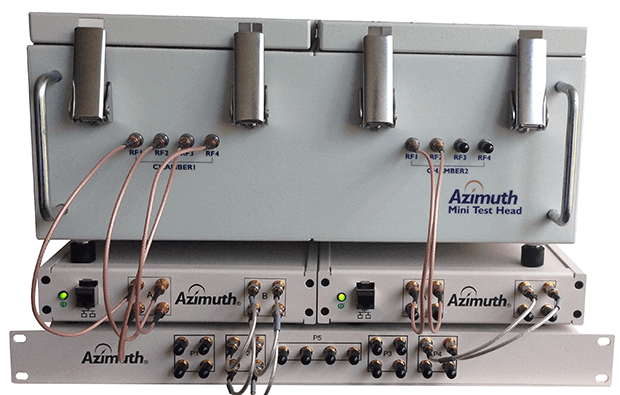Azimuth Systems delivers wireless performance test solutions to recreate real world device-network interaction and its impact on user experience. Azimuth’s recently announced Spider – a scalable, automated RF platform for LTE unlicensed, 802.11ac and other applications. Below is our interview with Vivek Vadakkuppattu, VP of Product Management and Marketing at Azimuth Systems:
 Q: Can you comment on what’s happening in the industry with regard to LTE Unlicensed?
Q: Can you comment on what’s happening in the industry with regard to LTE Unlicensed?
A: While the licensed spectrum remains 3GPP operators’ top priority, the 500 MHz of spectrum available in the 5 GHz band—the unlicensed spectrum—has generated a lot of interest and activity in the industry, relevant forums, and technical standard bodies. We’re all eyeing LTE Unlicensed as one way to expand the capacity, given the constrained spectrum. One of the interesting things about LTE Unlicensed is its wide audience: the cellular ecosystem (operators; chipset, handset, and infrastructure vendors), the Wi-Fi ecosystem (cable operators and service providers; chipset, handset, and access point vendors), and the broad group of industries incorporating Wi-Fi, such as automobile manufacturers adding hotspots to cars and software companies that use Wi-Fi as the underlying pipe to users.
 Related: RIFT.io Raises $16 Million To Deliver Scalable Network Virtualization To Network Builders
Related: RIFT.io Raises $16 Million To Deliver Scalable Network Virtualization To Network Builders
Q: There appears to be a lot of buzz in the industry around LTE unlicensed and coexistence. Can you comment on this?
A: Obviously, LTE Unlicensed touches a lot of people outside what used to be considered the cellular ecosystem. These aren’t discrete pockets but huge, overlapping applications. So naturally, a big part of the discussion has to be coexistence. Coexistence, or “fair sharing,” is critical between LTE Unlicensed and Wi-Fi—not to mention other technologies that rely on these frequency bands, though Wi-Fi is probably the biggest part of this conversation—as well as among various LTE Unlicensed carriers with each other. The goal is to not just ensure the ability to coexist but to ensure that one technology doesn’t affect the performance of another technology.
Q: You had mentioned in your announcement that testing LTE unlicensed requires a different approach. Can you expand on this?
A: With so many different technologies involved, traditional link-based testing is no longer sufficient. Testing LTE Unlicensed requires a system-based approach. That is, you have to look everything not just as individual components but as a whole, a system. And you need to test that system for coexistence, conformance, performance, and interoperability. Because of the evolution from a one-to-one to a many-to-many topology, traditional testing approaches—whether you’re talking field testing or lab testing, conducted with RF components or over the air in a shield room—just don’t scale well. It’s not technically sufficient or cost-effective given the many technical and practical challenges.
Q: What is Spider?
 Related: Auvik Makes Network Management Very Simple—But Still Powerful!
Related: Auvik Makes Network Management Very Simple—But Still Powerful!
A: Spider is full systems-approach testing made simple. It’s an automated, scalable RF Platform for LTE Unlicensed, IoT, and mesh testing. Instead of kludging together a solution using off-the-shelf components and test tools designed for point-to-point applications, you get a platform with integrated hardware and software. Spider provides complete RF isolation and automated control of MIMO radio links between multiple devices. We’ve built various turnkey solutions on the Spider platform to support LTE Unlicensed, IoT, 802.11ac, and use cases such as mobility, handover, device-to-device, and radio coexistence testing. We also made it possible for users to create their own solutions using the Spider platform and the modules available in the Director-II test executive. Because Spider is built specifically for testing mesh network topologies, it’s much more accurate and reliable than off-the-shelf components—but much more affordable that traditional wireless test systems.
Related: Perspica Networks Helps IT Teams Instantly Diagnose Problems In Virtualized Data Centers
Q: You had mentioned that you were doing work in other applications such as IoT, radio coexistence. Can you talk more about this?
A: The beauty of the Spider platform is that it scales to support a variety of applications. As you know, we have done some cutting-edge work when it comes to specific areas of IoT. For example, we’re working with the leading drone manufacturers. We will certainly extend some of that work to this platform to benefit a wider audience.
Activate Social Media:


